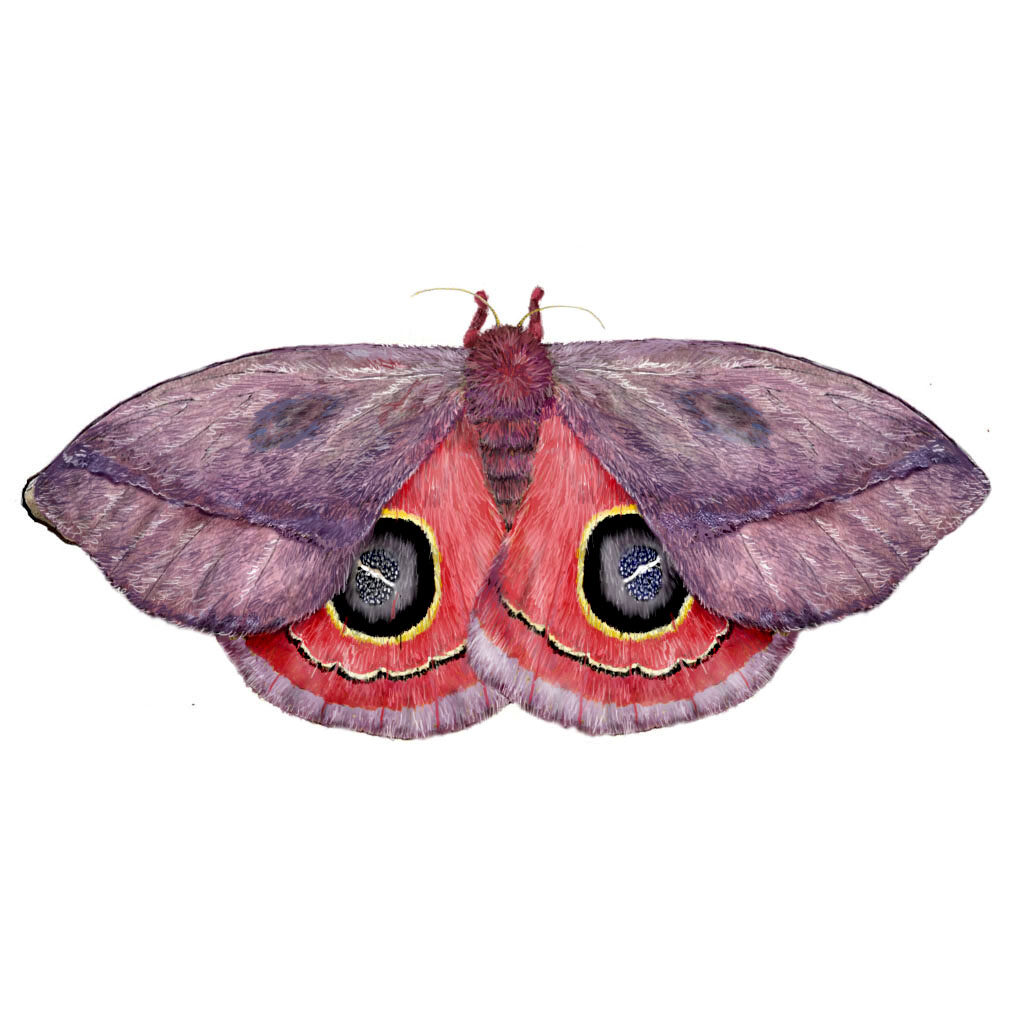Polyphemous Silk Moth

This beautiful Automeris silk moth is closely related to the io moth of the US. My friend Miriam, at nearby Martz Farm, alerted me to it, and I sketched it as it rested on a tree. Its most interesting feature is that while it blends amazingly well with the tree bark when at rest, if it feels endangered it flips its forewings up to reveal huge, startling eyespots on the hindwings. The eyespots, complete with highlights, are quite realistic – at least at a quick glance if you are a bird or another predator looking for a tender morsel for lunch. Studies have shown that the spots can startle predatory birds long enough for the moth to escape. This species’ brilliant orange-red color surrounding the eyespot is also electrifying and focuses attention on the eyespot for one shocking instant.
The moth is harmless, but beware the caterpillar, which resembles a plush green cuddle toy. If you touch the fuzzy spines, you may find yourself in pain for quite some time. Spiny caterpillars of many species are painful to the touch, so it’s best to give all spiky, spiny or fuzzy caterpillars a wide berth.
Birds, mammals, spiders and insects prey on the adult moth. Hornets sting and eat it, and tachinid and braconid flies can get past the caterpillar’s stinging spines to parasitize it. Habitat destruction and invasive species also threaten the 190+ species of silk moths throughout their range, from New England to Central America.
The 2”-3” caterpillar is polyphagous, meaning it eats many different kinds of plants, but it is partial to hibiscus leaves and you may find a whole herd of them munching leaves together in a hibiscus bush (so watch where you put your hands around hibiscus plants!). When the caterpillar reaches full size, it will pupate in a little shelter of leaves it cinches together with silky fibers. When it emerges as an adult butterfly, it has no mouthparts and concentrates on mating instead of eating.
The moth shown here is a female, as males have feathery antennae. This is characteristic of all moths – the feathery antennae of the male are tools to detect sex pheromones emitted by the female, guiding the male moth to female moths to mate. Since the moth is nocturnal, and well camouflaged when at rest, the scent of pheromones is an essential guide for enabling get-togethers – and the future of the species. female, as males have feathery antennae. This is characteristic of all moths – the feathery antennae of the male are tools to detect sex pheromones emitted by the female, guiding the male moth to the female moth to mate. Since the moth is nocturnal, and well camouflaged when at rest, the scent of pheromones is an essential guide for enabling get-togethers – and the future of the species.